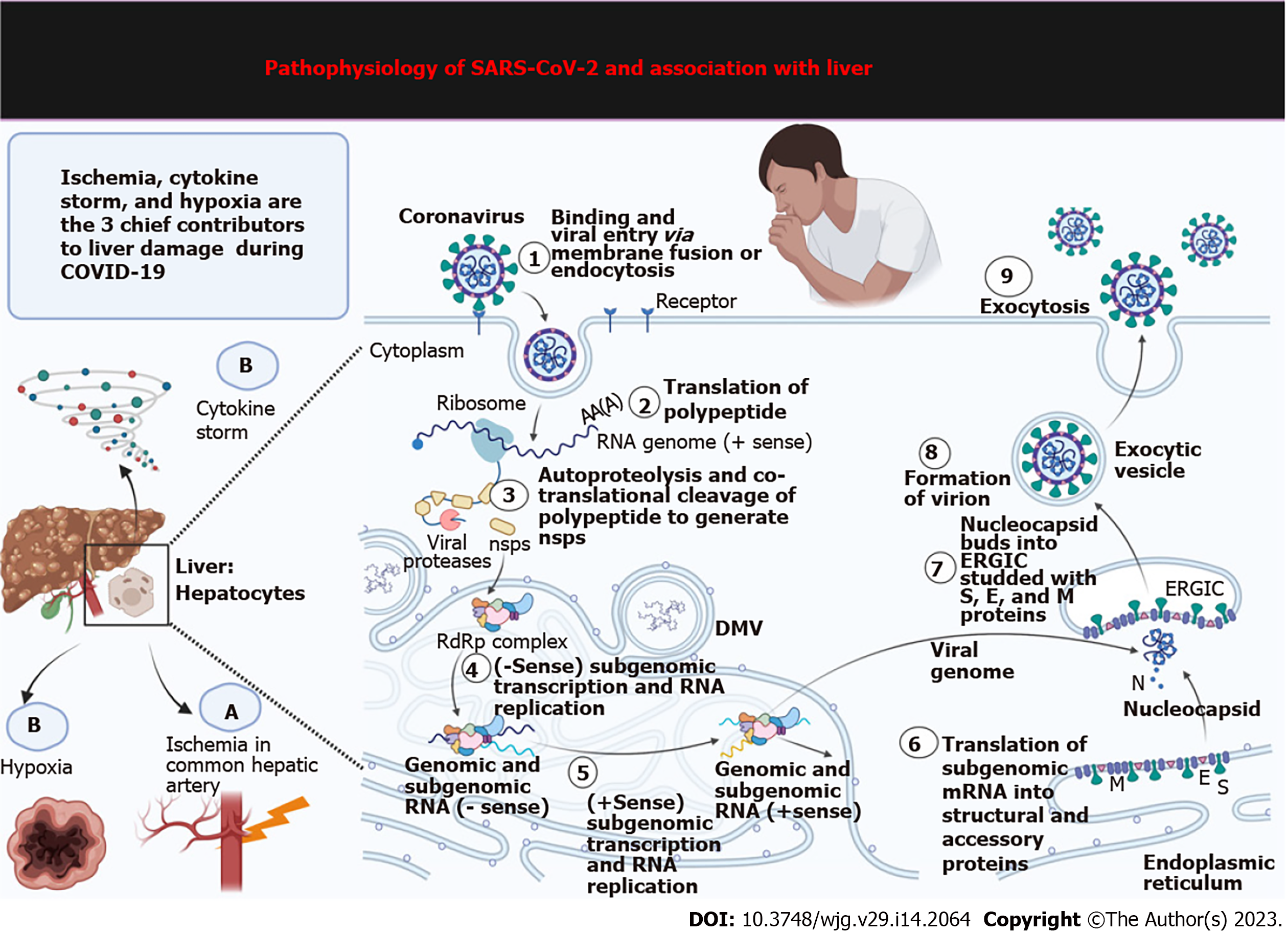Copyright
©The Author(s) 2023.
World J Gastroenterol. Apr 14, 2023; 29(14): 2064-2077
Published online Apr 14, 2023. doi: 10.3748/wjg.v29.i14.2064
Published online Apr 14, 2023. doi: 10.3748/wjg.v29.i14.2064
Figure 3 Molecular mechanisms of liver damage during coronavirus disease 2019 infection.
Hypoxia, ischemia, and cytokine storm significantly contribute to liver damage in coronavirus disease 2019-related comorbidities. This figure depicts how severe acute respiratory syndrome coronavirus 2 exponentially proliferates after entering hepatocytes. The steps occur: (1) Binding and viral entry via membrane fusion or endocytosis; (2) Translation of polypeptide; (3) Autoproteolysis and cotranslational polypeptide cleavage to generate non-structural proteins (nsps); (4) Sense subgenomic transcription and RNA replication; (5) + Sense subgenomic transcription and RNA replication; (6) Translation of subgenomic mRNA into structural and accessory proteins; (7) Nucleocapsid buds into ER-Golgi intermediate compartment studded with spike, envelope, and membrane proteins; (8) Formation of virion; and (9) Exocytosis. SARS-CoV-2: Severe acute respiratory syndrome coronavirus 2; COVID-19: Coronavirus disease 2019; ERGIC: ER-Golgi intermediate compartment; DMV: Double-membrane vesicle.
- Citation: Khullar N, Bhatti JS, Singh S, Thukral B, Reddy PH, Bhatti GK. Insight into the liver dysfunction in COVID-19 patients: Molecular mechanisms and possible therapeutic strategies. World J Gastroenterol 2023; 29(14): 2064-2077
- URL: https://www.wjgnet.com/1007-9327/full/v29/i14/2064.htm
- DOI: https://dx.doi.org/10.3748/wjg.v29.i14.2064









